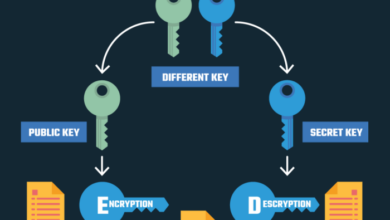
10 Signs You Might Have a Data Governance Problem
10 signs that you might have a data governance problem – 10 Signs You Might Have a Data Governance Problem – In today’s data-driven world, organizations are increasingly reliant on data to make informed decisions and drive business growth. However, without a robust data governance framework, even the most valuable data can become a liability.
Data governance is the process of establishing and enforcing policies and procedures to ensure that data is managed effectively, securely, and in compliance with regulations. If you’re not sure whether your organization has a data governance problem, here are 10 telltale signs.
From data silos hindering collaboration to inadequate security measures leaving sensitive information vulnerable, these signs can indicate a need for a comprehensive data governance strategy. Addressing these issues can help organizations unlock the true potential of their data, improve decision-making, and mitigate risks.
Data Silos and Inaccessibility

Data silos occur when data is isolated within different departments or systems, making it difficult to access and share across the organization. This fragmentation can have significant consequences for businesses, hindering collaboration, decision-making, and overall efficiency.
Consequences of Data Silos
Data silos can lead to a range of problems, including:
- Duplicated efforts and wasted resources:When different departments work with separate datasets, they may unknowingly duplicate efforts, leading to inefficiencies and wasted resources. For instance, two departments might be collecting customer data independently, resulting in redundant data entry and storage.
- Inconsistent data:Different departments may use different definitions and formats for the same data, leading to inconsistencies and making it difficult to compare and analyze information. For example, one department might record customer addresses as “Street, City, State,” while another uses “City, State, Street,” making data integration challenging.
- Limited insights and poor decision-making:A lack of access to a comprehensive view of the data can lead to poor decision-making. For example, a marketing team might make decisions based solely on their department’s data, without considering insights from sales or customer service, leading to suboptimal results.
Examples of Inaccessible Data
Inaccessible data can lead to inefficiencies and missed opportunities. For example:
- A sales team unable to access customer service recordsmight struggle to understand customer needs and tailor their sales approach, resulting in lost sales opportunities.
- A marketing team without access to website analyticsmight struggle to understand customer behavior and optimize marketing campaigns, leading to lower conversion rates.
- A finance team unable to access data on inventory levelsmight make inaccurate financial forecasts, leading to inefficient resource allocation.
Lack of Data Quality
Data quality is crucial for effective data analysis and decision-making. Poor data quality can lead to inaccurate insights, flawed conclusions, and ultimately, suboptimal business outcomes. This section explores various data quality issues and their potential consequences.
Data Inaccuracies
Data inaccuracies occur when information is incorrect or misleading. These inaccuracies can stem from various sources, including human errors during data entry, outdated information, or faulty data collection methods. For example, a customer database might contain incorrect addresses, leading to failed deliveries or marketing campaigns targeting the wrong audience.
Inaccurate data can lead to:* Misleading analysis:Inaccurate data can skew statistical analysis and lead to incorrect conclusions.
Ineffective decision-making
Having trouble finding important documents? Are you unsure who has access to what data? These could be signs of a data governance problem. Just like you need a system for organizing your personal photos, tips for organizing and storing photos can help, you need a well-defined data governance strategy to manage your organization’s information effectively.
A lack of data governance can lead to security breaches, compliance issues, and even lost revenue.
Decisions based on faulty data can be detrimental to business operations.
Missed opportunities
Inaccurate customer data can prevent businesses from identifying potential leads and opportunities.
Reputational damage
You know you’ve got a data governance problem when you find yourself constantly searching for information, unable to trust the data you find, or struggling to comply with regulations. But hey, at least you’re not alone! Even with the best intentions, sometimes it feels like we’re all just trying to piece together a puzzle, like figuring out how to how to make a lace patterned coffee table from scratch.
But just like a beautiful coffee table can bring a room together, a strong data governance strategy can bring order and clarity to your organization.
Incorrect information disseminated to customers can damage a company’s reputation.
Data Inconsistencies
Data inconsistencies arise when the same information is presented differently across various data sources. This can happen due to different data formats, naming conventions, or data entry errors.For example, a customer’s name might be spelled differently in different databases, leading to duplicate entries and difficulty in identifying unique customers.
Data inconsistencies can lead to:* Duplication and redundancy:Duplicate data entries can lead to data bloat and hinder efficient data processing.
Inaccurate reporting
Inconsistencies can result in unreliable data aggregation and reporting.
Difficulty in data integration
You know you’ve got a data governance problem when you’re spending more time cleaning up messy data than you are analyzing it. It’s like trying to knit a beautiful sweater with tangled yarn – you can’t create anything beautiful without first untangling the mess.
And just like finding the perfect colorful knit at Harvey Nichols harvey nichols colourful knits love , a good data governance strategy can help you create something truly beautiful and valuable from your data.
Inconsistent data formats can make it challenging to combine data from different sources.
Data Incompleteness
Data incompleteness refers to missing or incomplete data fields. This can occur due to incomplete data entry, missing information during data collection, or data loss.For example, a customer database might lack contact information for some customers, making it difficult to reach them for marketing campaigns or customer support.
Data incompleteness can lead to:* Limited analysis:Missing data can hinder comprehensive data analysis and limit the insights gained.
Biased results
Incomplete data can introduce bias into analysis, leading to inaccurate conclusions.
Missed opportunities
Incomplete customer information can prevent businesses from identifying potential leads and opportunities.
Inefficient data processing
Incomplete data can require additional processing and data cleaning efforts, increasing time and cost.
Data Quality Issues and Their Consequences
| Data Quality Issue | Potential Consequences ||—|—|| Inaccuracies| Misleading analysis, ineffective decision-making, missed opportunities, reputational damage || Inconsistencies| Duplication and redundancy, inaccurate reporting, difficulty in data integration || Incompleteness| Limited analysis, biased results, missed opportunities, inefficient data processing || Invalid data| Errors in data calculations and analysis, inaccurate insights, flawed conclusions || Outdated data| Irrelevant analysis, ineffective decision-making, missed opportunities |
Inadequate Data Security: 10 Signs That You Might Have A Data Governance Problem
Data security is paramount in today’s digital landscape. Organizations that fail to implement robust security measures risk exposing sensitive information to unauthorized access, data breaches, and compliance violations. Inadequate data security can lead to significant financial losses, reputational damage, and legal consequences.
It is crucial for organizations to recognize and address data security weaknesses to safeguard their data and maintain trust with stakeholders.
Risks Associated with Insufficient Data Security Measures, 10 signs that you might have a data governance problem
Insufficient data security measures expose organizations to a multitude of risks, including:
- Unauthorized Access:Weak passwords, lack of access control mechanisms, and insufficient user authentication can allow unauthorized individuals to gain access to sensitive data. This can lead to data theft, misuse, and manipulation.
- Data Breaches:Inadequate security measures can make organizations vulnerable to cyberattacks, such as malware infections, phishing scams, and ransomware attacks. These attacks can result in the theft or destruction of sensitive data, leading to significant financial losses and reputational damage.
- Compliance Violations:Failure to comply with data privacy regulations, such as the General Data Protection Regulation (GDPR) and the California Consumer Privacy Act (CCPA), can result in hefty fines and legal penalties. Organizations must implement robust data security measures to ensure compliance and protect their data.
Examples of Data Security Incidents and Their Impact
Numerous real-world examples demonstrate the devastating impact of data security incidents. For instance, in 2017, the Equifax data breach exposed the personal information of over 147 million individuals, including Social Security numbers, credit card details, and driver’s license numbers. This breach resulted in significant financial losses for Equifax, as well as reputational damage and legal consequences.
Similarly, the 2018 Marriott data breach compromised the personal information of over 500 million guests, including names, addresses, and passport numbers. These incidents highlight the importance of implementing comprehensive data security measures to prevent such breaches.
Essential Data Security Practices to Mitigate Risks
Organizations can mitigate data security risks by implementing essential security practices, including:
- Strong Password Policies:Enforce strong password policies that require users to create complex passwords and change them regularly. Organizations should also consider implementing multi-factor authentication (MFA) to enhance account security.
- Data Encryption:Encrypt sensitive data both at rest and in transit to prevent unauthorized access. Encryption transforms data into an unreadable format, making it difficult for hackers to decipher.
- Access Control:Implement access control measures to restrict access to sensitive data based on user roles and permissions. This ensures that only authorized individuals can access specific data sets.
- Regular Security Audits:Conduct regular security audits to identify and address vulnerabilities in data security systems. These audits should assess the effectiveness of security controls and identify areas for improvement.
- Employee Training:Provide employees with comprehensive training on data security best practices, including how to identify phishing scams, recognize malware threats, and protect sensitive data.
- Incident Response Plan:Develop a comprehensive incident response plan to handle data breaches and security incidents effectively. This plan should Artikel procedures for containing the breach, notifying affected individuals, and restoring data integrity.
Absence of Data Governance Policies
Imagine a company with vast amounts of data, but no clear guidelines on how to manage it. This is the reality for many organizations without well-defined data governance policies. These policies act as the foundation for responsible data management, ensuring data quality, security, and compliance.
The Importance of Data Governance Policies
Data governance policies are essential for establishing clear guidelines on data ownership, access control, and data retention. They provide a framework for managing data throughout its lifecycle, from creation to deletion.
- Data Ownership:Clearly defining data ownership helps to establish accountability for data quality, security, and compliance. This means assigning responsibility to specific individuals or teams for maintaining the data’s integrity and ensuring its proper use.
- Access Control:Implementing robust access control measures is crucial for protecting sensitive data from unauthorized access. Policies should specify who has access to specific data sets, what level of access they have, and for what purposes.
- Data Retention:Establishing data retention policies is essential for complying with legal and regulatory requirements, as well as minimizing storage costs. These policies define how long data should be stored, what data should be archived, and how data should be disposed of.
Consequences of Lacking Data Governance Policies
The absence of data governance policies can lead to a range of negative consequences, including:
- Legal and Regulatory Challenges:Organizations without data governance policies may struggle to comply with data privacy regulations like GDPR or CCPA. Failure to comply with these regulations can result in hefty fines and reputational damage.
- Data Breaches:Lack of access control and data security measures can make organizations vulnerable to data breaches, potentially exposing sensitive customer information or intellectual property. This can lead to financial losses, legal liabilities, and damage to brand reputation.
- Data Quality Issues:Without clear guidelines for data management, data quality can suffer. Inconsistent data entry, outdated information, and missing data can lead to inaccurate insights and poor decision-making.
- Inefficient Data Management:The absence of data governance policies can result in inefficient data management practices. This can lead to duplicated data, wasted storage space, and difficulty in finding the right data when needed.
Key Elements of a Data Governance Policy
A comprehensive data governance policy should include the following key elements:







